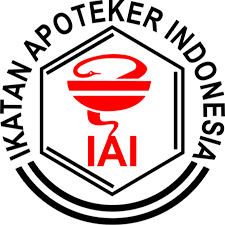Isolasi dan Karakterisasi Selulosa Mikrokristal dari Ampas Tebu (Saccharum officinarum L.)
Desy Nawangsari(1*)(1) Fakultas Kesehatan, Program Studi Sarjana Farmasi, Universitas Harapan Bangsa
(*) Corresponding Author
Abstract
Microcrystalline cellulose is the result of isolation from alpha cellulose. Woody plants are generally the source of microcrystalline cellulose production. One of the natural ingredients that can be used to make microcrystalline cellulose is bagasse (Saccharum officinarum L.). Bagasse contains 37.65% of cellulose which can be isolated by the delignification stage using a base solution, the process of bleaching and hydrolysis of alpha cellulose by high temperature heating using dilute dilute acid. The yield of microcrystalline cellulose from bagasse 26.03% and fulfilling the characterization based on the literature.
Keywords
Full Text:
PDFReferences
Bhimte, N. a and Tayade, P. T., 2007. Evaluation of microcrystalline cellulose prepared from sisal fibers as a tablet excipient: a technical note., AAPS PharmSciTech, 8(1), p. 8.
Carlin, B., 2008. Direct Compression and The Role of Filler-Binders. Dalam : Augsburger, L.L., Hoag, S.W. (Eds.). Pharmaceutical Dosage Forms: Tablets, Informa, pp. 173–216.
Cowd, M., 1991. Kimia Polimer. Bandung: ITB.
Håkansson, H. and Ahlgren, P., 2005. Acid hydrolysis of some industrial pulps: Effect of hydrolysis conditions and raw material, Cellulose, 12(2), pp. 177–183.
Hamisan, A. F. et al., 2009. Delignification of oil palm empty fruit bunch using chemical and microbial pretreatment methods.pdf, International Journal of agricultural Research, pp. 250–256.
Kementerian Kesehatan, R. I., 2013. Peraturan Menteri Kesehatan RI No. 71 Tahun 2013 Tentang Pelayanan Kesehatan Pada Jaminan Kesehatan Nasional.
Ma, X., Chang, P. R. and Yu, J., 2008. Properties of biodegradable thermoplastic pea starch/ carboxymethyl cellulose and pea starch/microcrystalline cellulose composites, Carbohydrate Polymers, 72(3), pp. 369–375.
Mersa, R. N., 2008. Karakterisasi Selulosa Mikrokristal dari Serbuk Gergaji Kayu Albasia sebagai Eksipien Tablet Metode Kempa Langsung, in. Jatinangor: Universitas Padjadjaran.
Mohamad Haafiz, M. K. et al., 2013. Isolation and characterization of microcrystalline cellulose from oil palm biomass residue, Carbohydrate Polymers. Elsevier Ltd., 93(2), pp. 628–634.
Ohwoavworhua, F., Okhamafe, A. and Adelakun, T., 2009. Processing Pharmaceutical grade microcrystalline cellulose from groundnut husk: Extraction methods and characterization, International journal of Green Pharmacy, 3(2), pp. 97–104.
Patel, S., Kaushal, A. M. and Bansal, A. K., 2006, Compression Physics in the Formulation Development of Tablets, Critical Reviews™ in Therapeutic Drug Carrier Systems, 23(1), pp. 1–66.
Rowe, R., Sheskey, P. and Quinn, M., 2009. Handbook of Pharmaceutical Excipients, Sixth edition, pp. 549–553.
Septiyani, R., 2011. Pengaruh Konsentrasi Dan Waktu Inkubasi Enzim Selulase Terhadap Kadar Gula Eduksi Ampas Tebu. Skripsi. Teknologi Hasil Pertanian. Universitas Lampung. 53 hlm.
Sun, J. X. et al., 2004. Isolation and characterization of cellulose from sugarcane bagasse, Polymer Degradation and Stability, 84(2), pp. 331–339
Thakur, M., 2014. Processing and Characterization of Natural Cellulose Fiber/Thermoset Polymer Composite, Charbohyd Polym, 109, pp. 102–117.
Umar, S.T., 2011. Pemanfaatan Serat Rami untuk Pembuatan Selulosa.Datinlitbang – BPP Kemenham RI. Tersedia di: http://www.balitbang.kemhan.go.id/?q =content/pemanfaatan-serat-ramiuntuk- pembuatan-selulosa [Diakses tanggal 9 Juni 2019].
Article Metrics
Abstract view(s): 1762 time(s)PDF: 2489 time(s)
Refbacks
- There are currently no refbacks.








